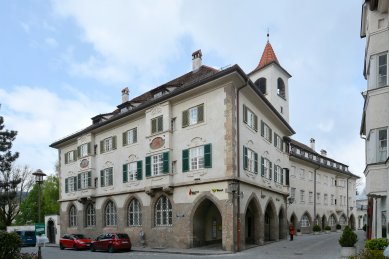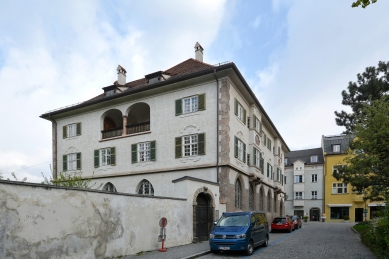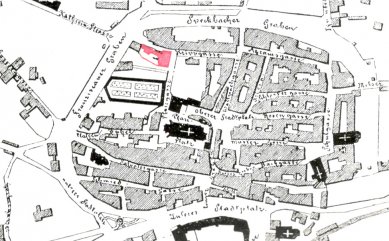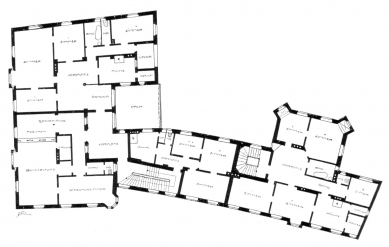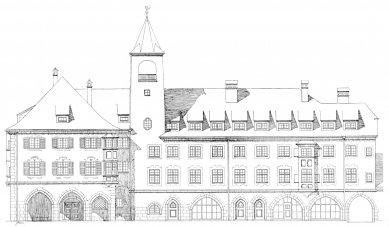
Postal Service and Savings Bank in Hall in Tirol
The post and savings bank building in Hall i. T.

During study trips focused on architecture, it often happens that they are mono-thematically oriented towards the latest realizations known from recent issues of magazines. Perception thus superficially limits itself to a fleeting time period without knowledge of deeper contexts. The advantage of traveling with architectural historian Martin Horáček is that he can place the visited buildings not only into a historical framework but also accompany them with broad social and cultural contexts. During a visit to the Austrian town of Hall in Tirol (once the second largest settlement in Austria and more significant than neighboring Innsbruck), a tour of the Welzenbacher functionalist hotel from the 1930s would serve as a sufficient historical excursion, but thanks to the architectural historian on board the bus, we also did not miss the nearby c. and k. post office with the savings bank, designed by Welzenbacher's teacher Theodor Fischer.
The design from 1912 lies in the middle of a compact medieval core, striving for harmonious integration into the historical substance, following an irregular ground plan, and adopting several local typological elements as well as material composition. Without expert commentary, our expedition would have passed by the building, as it does not differ significantly from the surrounding historical buildings and does not suggest that Adolf Loos had completed the department store Goldman & Salatsch in Vienna just a year earlier. Nevertheless, we cannot classify Fischer purely among historicizing creators, as he was also among the proponents of Art Nouveau and row housing long before Le Corbusier.
The design from 1912 lies in the middle of a compact medieval core, striving for harmonious integration into the historical substance, following an irregular ground plan, and adopting several local typological elements as well as material composition. Without expert commentary, our expedition would have passed by the building, as it does not differ significantly from the surrounding historical buildings and does not suggest that Adolf Loos had completed the department store Goldman & Salatsch in Vienna just a year earlier. Nevertheless, we cannot classify Fischer purely among historicizing creators, as he was also among the proponents of Art Nouveau and row housing long before Le Corbusier.
notes from the trip to Lake Constance, April 23, 2017
The English translation is powered by AI tool. Switch to Czech to view the original text source.
0 comments
add comment


